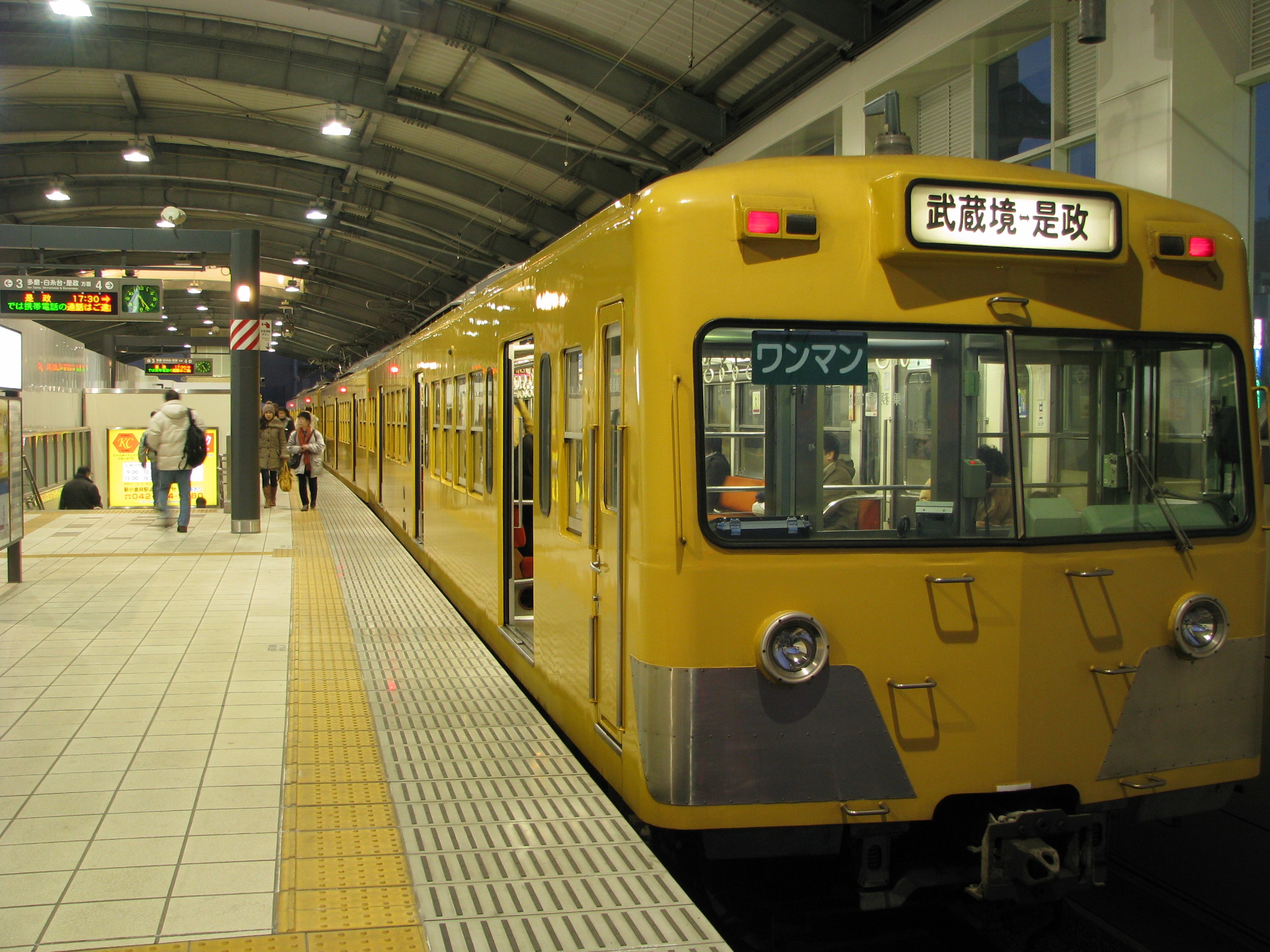Seibu Tamagawa Line on:
[Wikipedia]
[Google]
[Amazon]
The is an 8.0 km railway line in the western suburbs of

Seibu-Tamagawa Line Guide
information on stations and their neighbours, tickets, and transfers in both English and Japanese {{coord, 35.68212, N, 139.51950, E, source:placeopedia, display=title Railway lines in Tokyo Tamagawa Line 1067 mm gauge railways in Japan Railway lines opened in 1917
Tokyo
Tokyo (; ja, 東京, , ), officially the Tokyo Metropolis ( ja, 東京都, label=none, ), is the capital and largest city of Japan. Formerly known as Edo, its metropolitan area () is the most populous in the world, with an estimated 37.468 ...
operated by the private railway operator Seibu Railway
is a conglomerate based in Tokorozawa, Saitama, Japan, with principal business areas in railways, tourism, and real estate. Seibu Railway's operations are concentrated in northwest Tokyo and Saitama Prefecture; the name "Seibu" is an abbreviati ...
. The line connects Musashi-Sakai Station
is an interchange passenger railway station located in the city of Musashino, Tokyo, Japan, operated by East Japan Railway Company (JR East) and the private railway company, Seibu Railway.
Lines
Musashi-Sakai Station is served by the JR East ...
on the Chūō Main Line
The , commonly called the Chūō Line, is one of the major trunk railway lines in Japan. It connects Tokyo and Nagoya, although it is the slowest direct railway connection between the two cities; the coastal Tōkaidō Main Line is slightly faste ...
with Koremasa Station
is a passenger railway station located in the city of Fuchū, Tokyo, Japan, operated by the private railway operator Seibu Railway.
Lines
Koremasa Station is a terminus of the Seibu Tamagawa Line, and is located 8.0 kilometers from the opposin ...
along the Tama River
The is a major river in Yamanashi, Kanagawa and Tokyo Prefectures on Honshū, Japan. It is officially classified as a Class 1 river by the Japanese government. Its total length is , and the total of the river's basin area spans .
The river ...
. The line has only six stations and is not connected to any other part of the Seibu Railway system. The line is single-track: trains traveling in opposite directions pass each other as necessary at the stations, which are double-tracked.
Although the line is short, it provides access to the Tokyo University of Foreign Studies
, often referred to as TUFS, is a specialist research university in Fuchū, Tokyo, Japan.
TUFS is primarily devoted to foreign language, international affairs and foreign studies. It also features an Asia-African institution.
History
The Uni ...
, the Tokyo Racecourse, the Ajinomoto Stadium
, also known as Tokyo Stadium in AFC Champions League, is a multi-purpose stadium in Chōfu, Tokyo, Japan. The stadium was founded at Kantō Mura, the redevelopment area formerly used by United States Forces Japan, in March 2001. It was the fi ...
, the Tokyo Metropolitan Police Department police school, many cemeteries (including Tokyo's largest, Tama Cemetery), the American School in Japan, and the Tama River.
Stations

Rolling Stock
As of March 2010, the line's services are operated exclusively by a fleet of 16 New 101 Series. These trains are wrapped with different liveries on various occasions. However, the New 101 Series trains typically operate a white livery.Liveries
Izu Hakone Color To commemorate the 100th anniversary of the opening of the Tamagawa Line from 2017 to 2018, which coincided with the 100th anniversary of the Izu Hakone Railway, the two lines celebrated by adopting each other's liveries. Akaden painting By request from a questionnaire at the 100th-anniversary event of the Tamagawa Line, from January 24, 2018, Seibu Railway's old livery "Akaden Paint" (red x beige) was used. Two-tone color From April 18, 2018, the trains were reprinted with the two-tone color of yellow x beige. The paint color is derived from the livery that was used during the time of the debut of the New 101 series train. The livery was also used before the fleet renewal of 2010, as the Old 101 Series train was featured in the same livery. This livery was the most requested after Akaden painting in the questionnaire at the 100th-anniversary event of Tamagawa Line. Omi Railway Color (1251 formation) From July 11, 2018, To commemorate the 120th anniversary of the Ohmi Railway and the 100th anniversary of the Tamagawa line a wrapping featuring the "Mizuumifugo" (light blue) livery was introduced.Former Rolling Stock
Before the New 101 series, the line's services were operated by the Old 101 series, which were in use from 1996 to 2010. These trains originally were introduced as "One-Man" (ワンマン) services. Prior to the One-Man train service on the New 101 Series The following trains were also used: The 401 series, 701 series, which had been transferred from the Shinjuku line system to the Tamagawa line, and the 451 series, 551 series, and the 571 series, which were called Akaden trains due to their red and beige livery.History
The first section of the line, between Musashi-Sakai and Kita-Tama Station (present-day Shiraitodai Station), opened on 22 October 1917. The line was extended to Koremasa on 20 June 1922. In 1927, the company was absorbed by theSeibu Railway
is a conglomerate based in Tokorozawa, Saitama, Japan, with principal business areas in railways, tourism, and real estate. Seibu Railway's operations are concentrated in northwest Tokyo and Saitama Prefecture; the name "Seibu" is an abbreviati ...
. The entire line was electrified in 1950. Freight operations ceased in 1967.
References
This article incorporates material from the corresponding article in the Japanese Wikipedia.External links
Seibu-Tamagawa Line Guide
information on stations and their neighbours, tickets, and transfers in both English and Japanese {{coord, 35.68212, N, 139.51950, E, source:placeopedia, display=title Railway lines in Tokyo Tamagawa Line 1067 mm gauge railways in Japan Railway lines opened in 1917